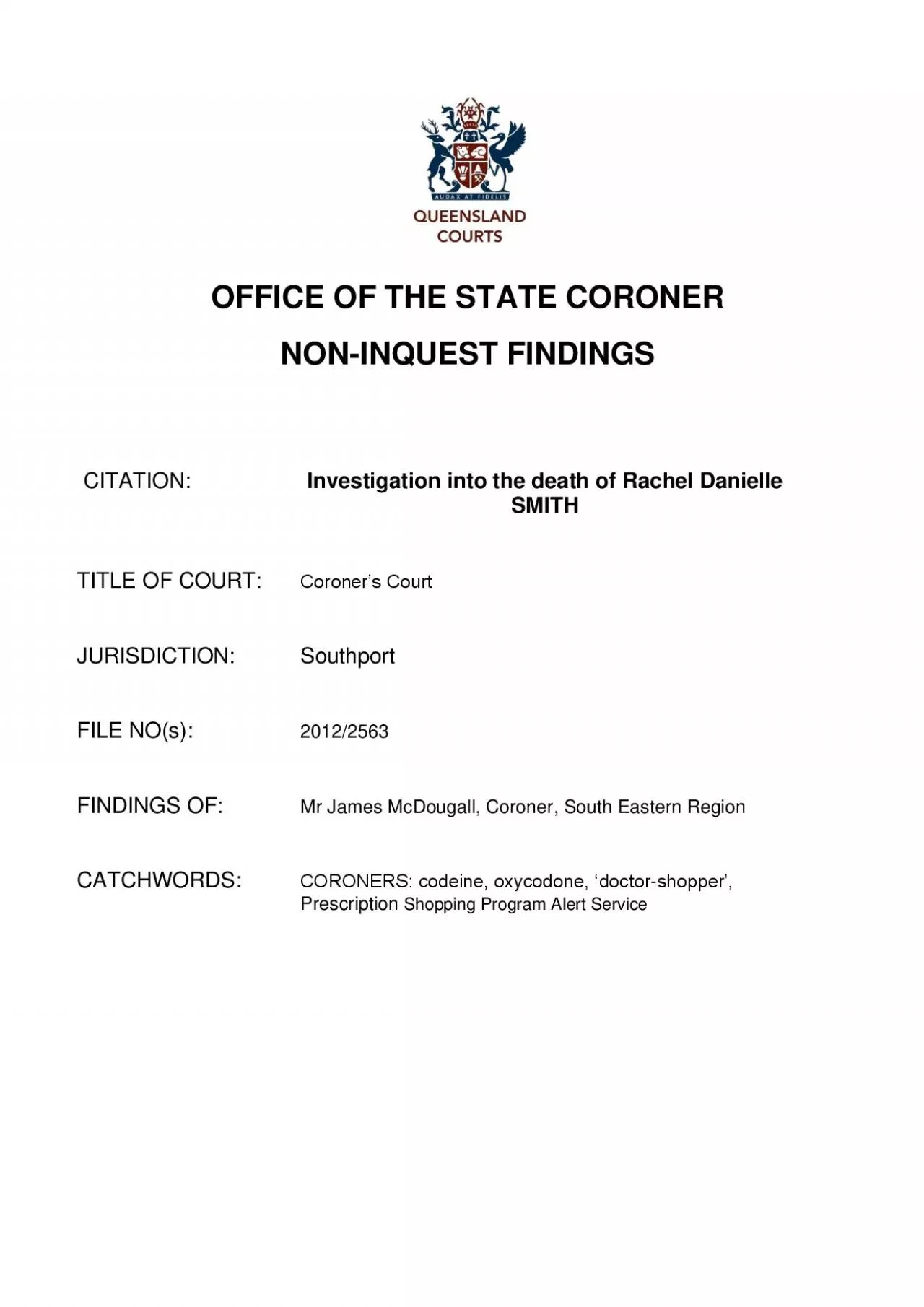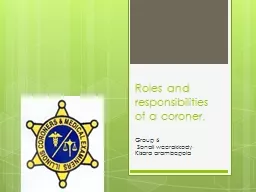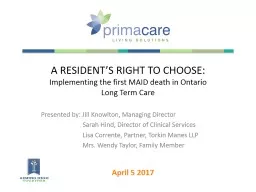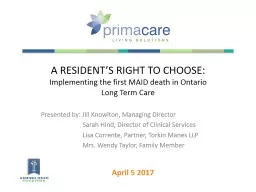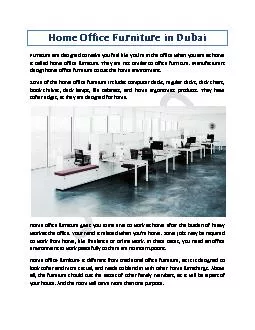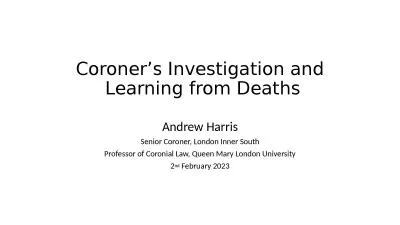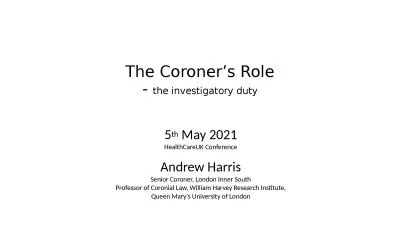PDF-OFFICE OF THE STATE CORONER
Author : riley | Published Date : 2022-09-08
NON INQUEST FINDINGS CITATION Investigation into the death of Rachel Danielle SMITH TITLE OF COURT Coroners Court JURISDICTION Southport FILE NOs 20122563 FINDINGS
Presentation Embed Code
Download Presentation
Download Presentation The PPT/PDF document "OFFICE OF THE STATE CORONER" is the property of its rightful owner. Permission is granted to download and print the materials on this website for personal, non-commercial use only, and to display it on your personal computer provided you do not modify the materials and that you retain all copyright notices contained in the materials. By downloading content from our website, you accept the terms of this agreement.
OFFICE OF THE STATE CORONER: Transcript
Download Rules Of Document
"OFFICE OF THE STATE CORONER"The content belongs to its owner. You may download and print it for personal use, without modification, and keep all copyright notices. By downloading, you agree to these terms.
Related Documents

